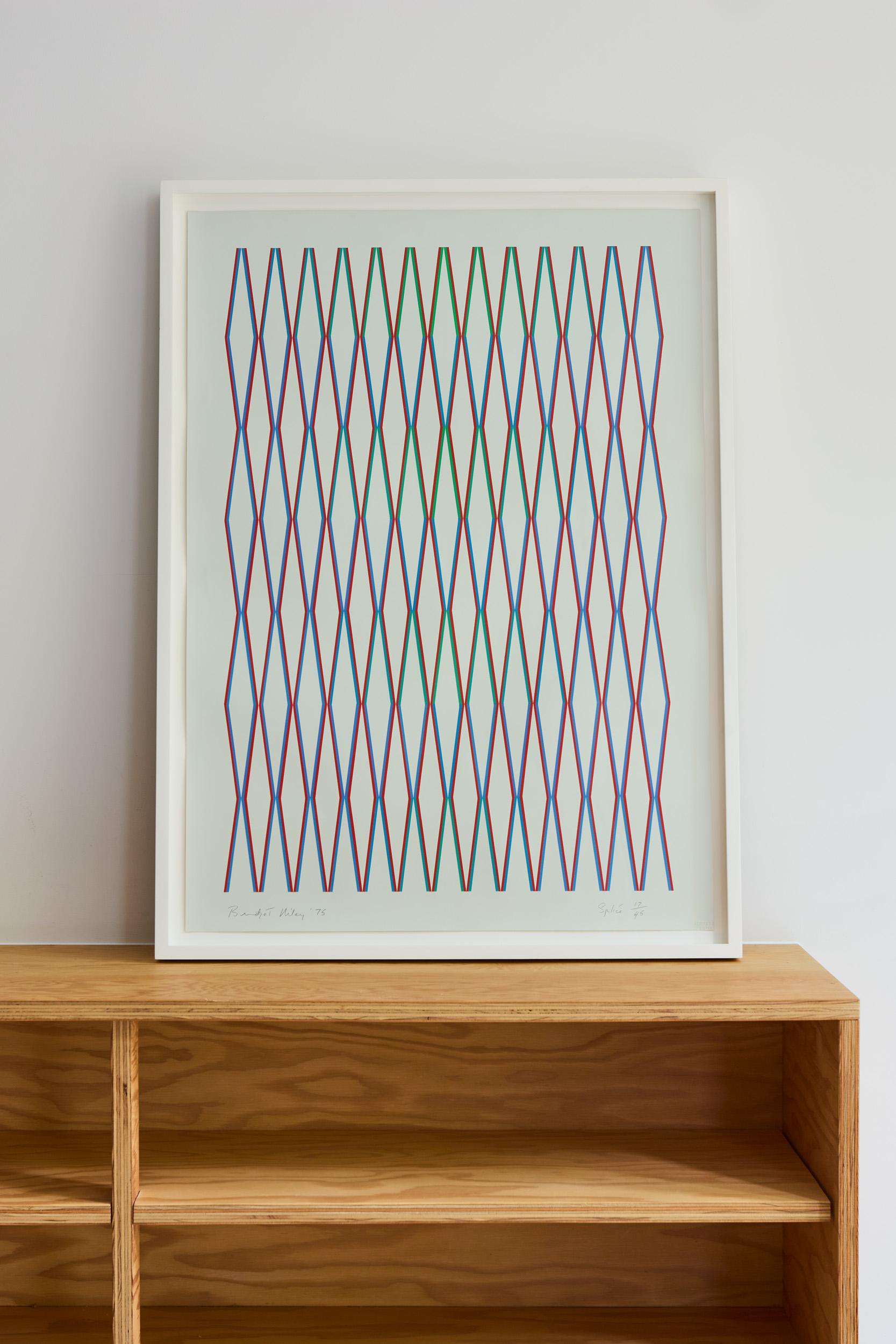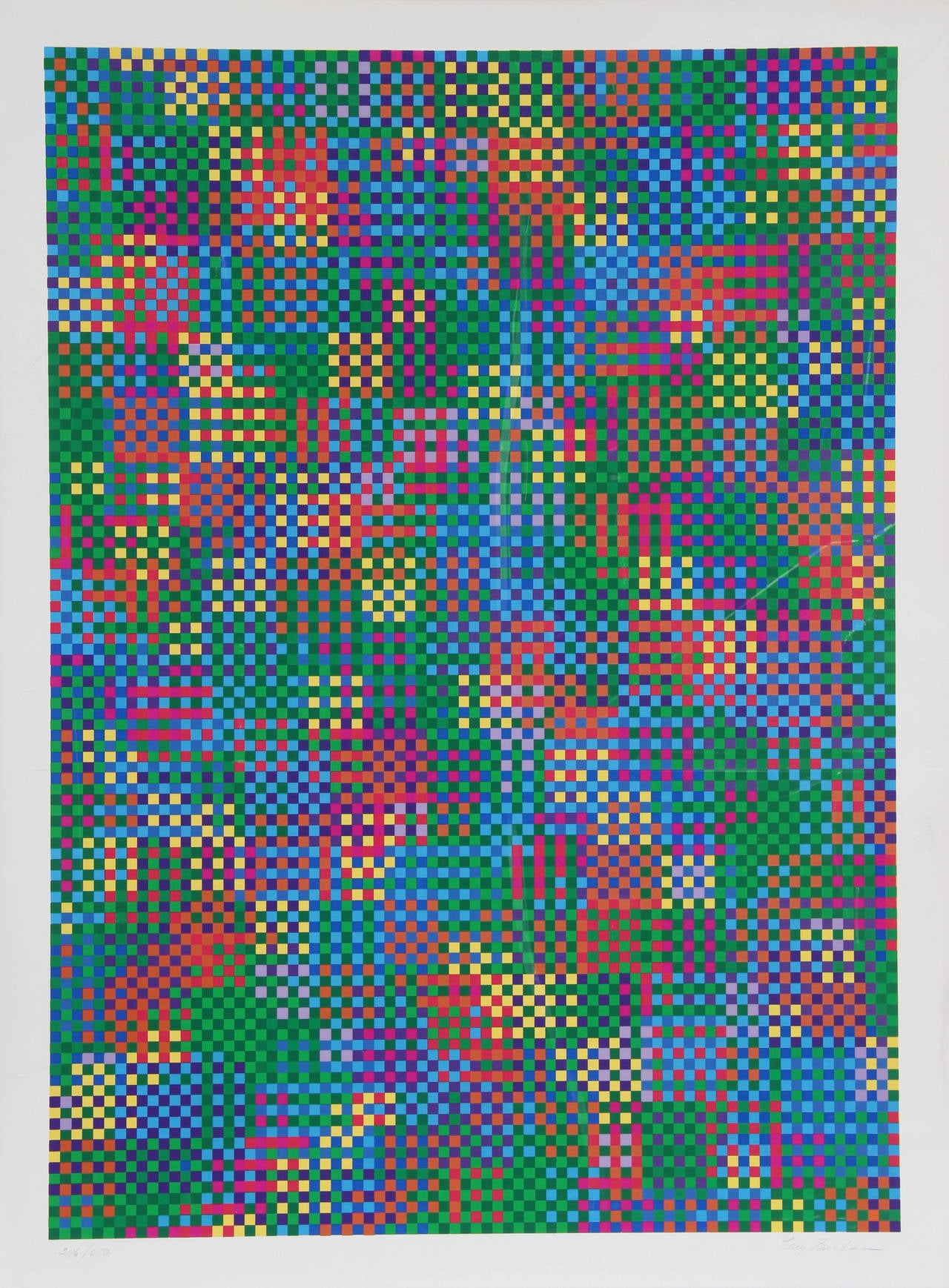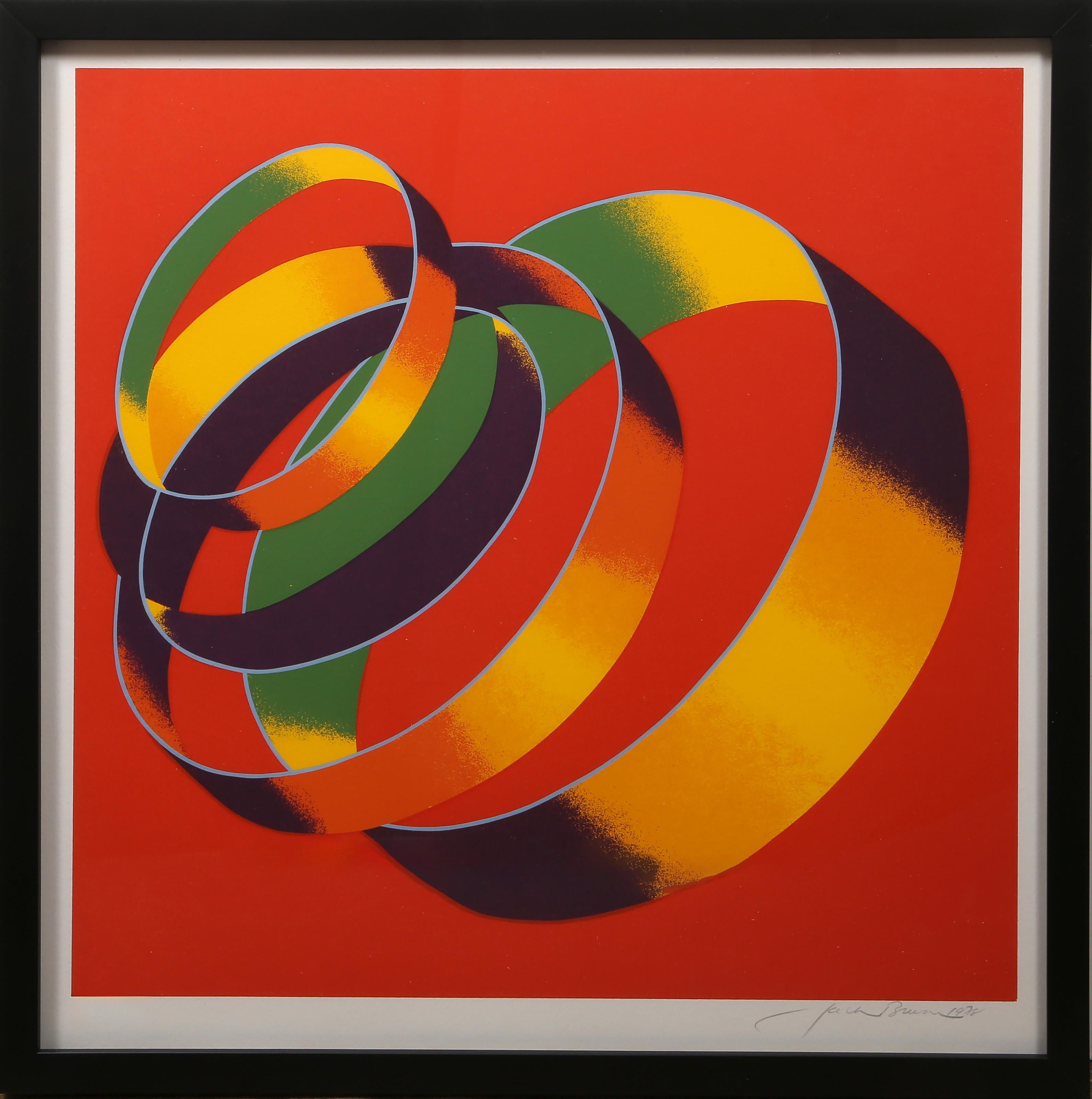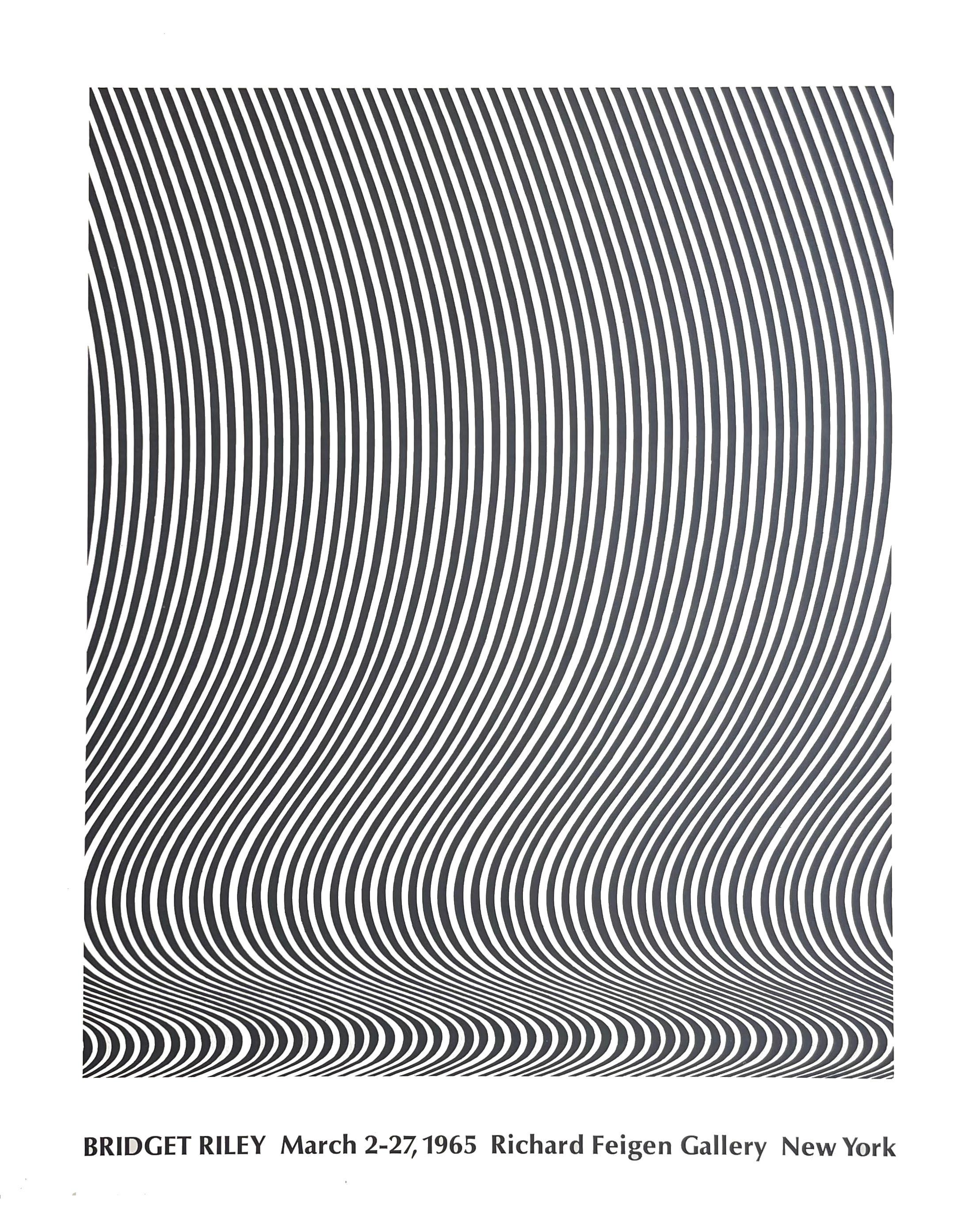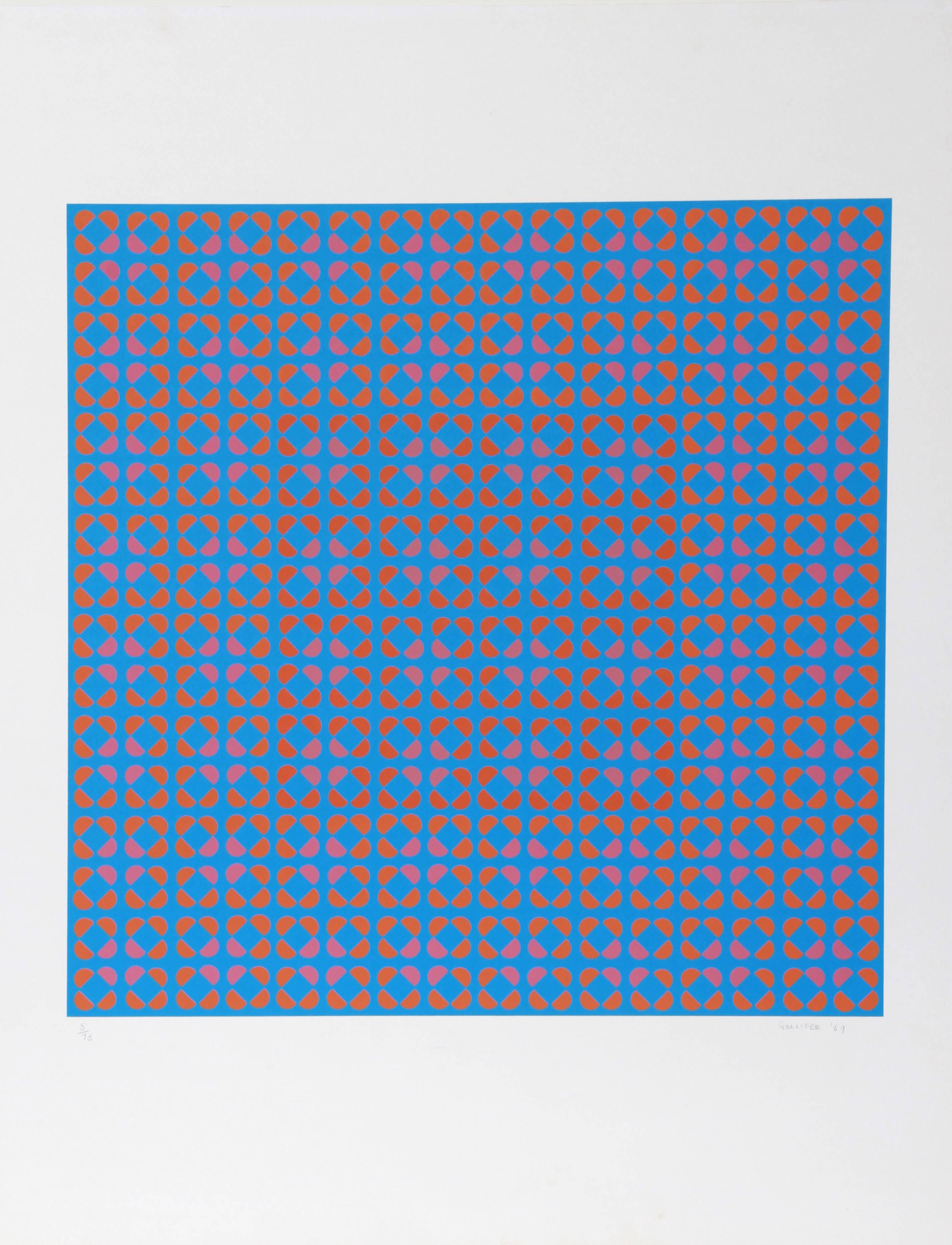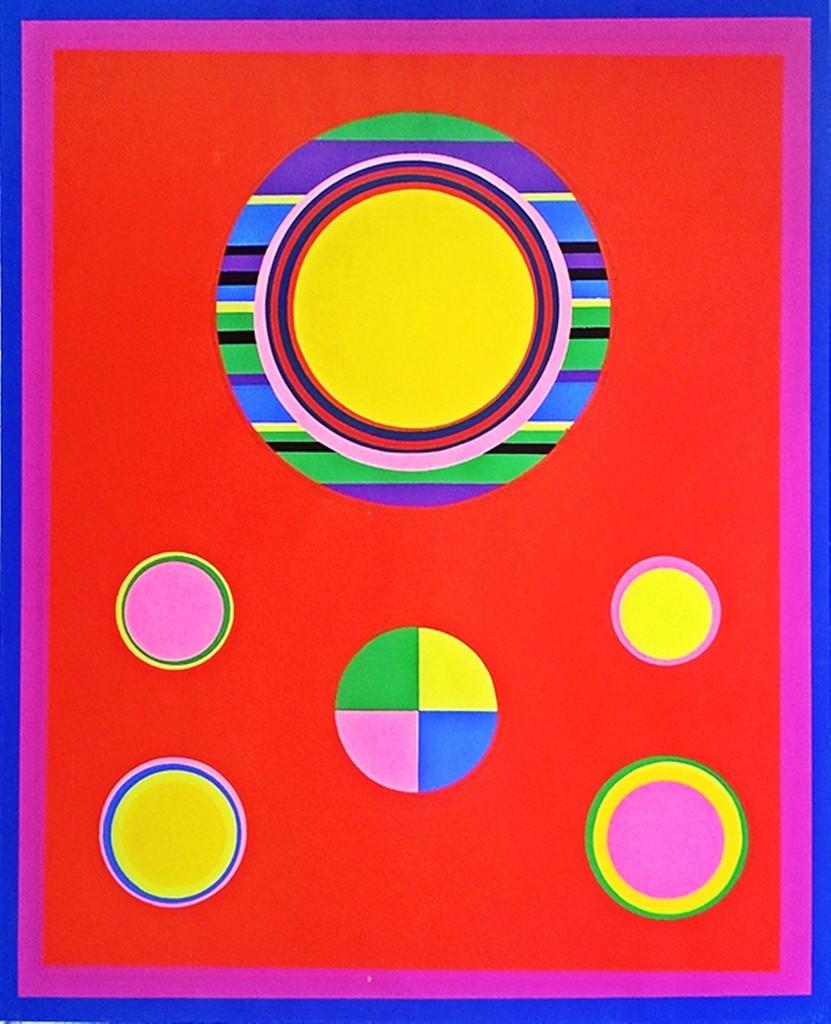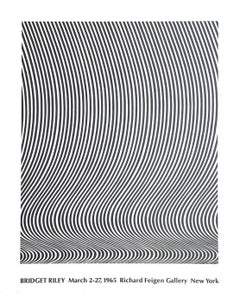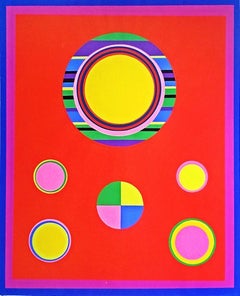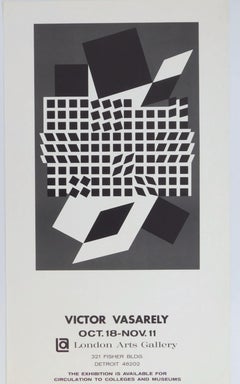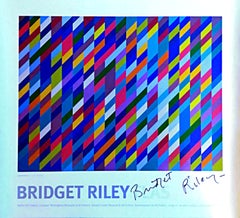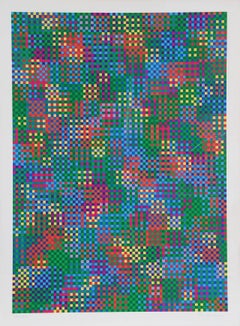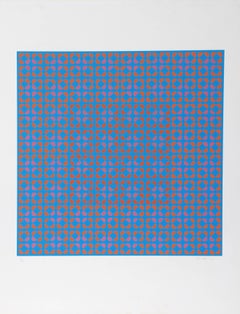Items Similar to Historic limited edition 1960s retrospective poster British Council Pop Op Art
Want more images or videos?
Request additional images or videos from the seller
1 of 8
Historic limited edition 1960s retrospective poster British Council Pop Op Art1978
1978
$2,500
£1,924.14
€2,191.26
CA$3,554.12
A$3,863.45
CHF 2,024.79
MX$47,021.43
NOK 25,487.22
SEK 23,949.70
DKK 16,364.33
About the Item
After Bridget Riley
Bridget Riley Works 1959-1978: A Major Retrospective Exhibition, 1978
in collaboration with five international museums
Published by the Fine Arts Council UK
Offset lithograph
33 1/2 × 23 1/2 inches
Edition of 500
Unframed
Bridget Riley Biography
Riley was born at Norwood, London, the daughter of a businessman. Her childhood was spent in Cornwall and Lincolnshire. She studied at Goldsmiths' College from 1949 to 1952, and at the Royal College of Art from 1952 to 1955. She began painting figure subjects in a semi-impressionist manner, then changed to pointillism around 1958, mainly producing landscapes. In 1960 she evolved a style in which she explored the dynamic potentialities of optical phenomena. These so-called 'Op-art' pieces, such as Fall, 1963 (Tate Gallery T00616), produce a disorienting physical effect on the eye.
Riley taught children for two years before joining the Loughborough School of Art, where she initiated a basic design course in 1959. She then taught at Hornsey School of Art, and from 1962 at Croydon School of Art. She worked for the J. Walter Thompson Group advertising agency from 1960, but gave up teaching and advertising agency work in 1963-4.
Group shows include Young Contemporaries, London, 1955; Diversion, South London Art Gallery 1958; an Arts Council Touring Exhibition, 1962; Tooth's Critics Choice Exhibition, selected by Edward Lucie-Smith, 1963; John Moores' Exhibition, Liverpool, 1963; The New Generation, Whitechapel Gallery 1964; Movement, Hanover Gallery, London, 1964; Painting and Sculpture of a Decade 1954-1964, Tate Gallery, 1964; and Op Art, touring Ireland in 1967. Her numerous European and American exhibitions include The Sixties Collection Revisited, Aldrich Museum of Contemporary Art, Ridgefield, Connecticut, 1978.
Riley was awarded the AICA Critics Prize in 1963 and also that year a John Moores', Liverpool Open Section prize. In 1964 she was awarded a Peter Stuyvesant Foundation Travel bursary to the USA. In 1968 she won an International Painting Prize at the Venice Biennale.
Her first solo exhibition was held at Gallery One in 1962 with a second solo show the following year. Other solo shows were held at Nottingham University, 1963; Richard Feigen Gallery, New York and Feigen Palmer Gallery, Los Angeles, 1965; Museum of Modern Art, New York, with US tour, 1966; Venice Biennale, British Pavilion (with Phillip King), 1968; Hayward Gallery, London, 1971; National Gallery, Prague, 1971; Hayward Gallery and Kunsthalle Nuremberg, 1992; Kettle's Yard, Cambridge, 1995; and Waddington Galleries, London, 1996.
-Courtesy Tate Gallery
- Creation Year:1978
- Dimensions:Height: 33.5 in (85.09 cm)Width: 23.5 in (59.69 cm)
- Medium:
- Movement & Style:
- After:Bridget Riley (1931, British)
- Period:
- Condition:Good vintage condition with some overall creasing and handling (see photos).
- Gallery Location:New York, NY
- Reference Number:1stDibs: LU1745213900192
About the Seller
5.0
Gold Seller
Premium sellers maintaining a 4.3+ rating and 24-hour response times
Established in 2007
1stDibs seller since 2022
458 sales on 1stDibs
Typical response time: 2 hours
- ShippingRetrieving quote...Shipping from: New York, NY
- Return Policy
Authenticity Guarantee
In the unlikely event there’s an issue with an item’s authenticity, contact us within 1 year for a full refund. DetailsMoney-Back Guarantee
If your item is not as described, is damaged in transit, or does not arrive, contact us within 7 days for a full refund. Details24-Hour Cancellation
You have a 24-hour grace period in which to reconsider your purchase, with no questions asked.Vetted Professional Sellers
Our world-class sellers must adhere to strict standards for service and quality, maintaining the integrity of our listings.Price-Match Guarantee
If you find that a seller listed the same item for a lower price elsewhere, we’ll match it.Trusted Global Delivery
Our best-in-class carrier network provides specialized shipping options worldwide, including custom delivery.More From This Seller
View AllBridget Riley, Rare historic LT Ed Richard Feigen Gallery 1965 Op Art print
By Bridget Riley
Located in New York, NY
Bridget Riley
Richard Feigen Gallery 1965 Op Art poster, 1965
Offset lithograph poster
Limited Edition of approx. 300 (unnumbered)
21 × 17 inches
Unframed
Very rare early Bridget Riley poster...
Category
1960s Op Art Abstract Prints
Materials
Lithograph, Offset
Rare Op Art Mid Century Modern Geometric Abstraction 1969 silkscreen Signed 6/9
By John Grillo
Located in New York, NY
John Grillo
Untitled Op Art Mid Century Modern, 1969
Color silkscreen on art paper with deckled edges
Signed and dated lower right; numbered 6/9 lower left
Limited Edition of only 9...
Category
1960s Abstract Expressionist Abstract Prints
Materials
Screen
Rare 1960s Victor Vasarely offset lithograph poster, Op Art print
By Victor Vasarely
Located in New York, NY
Victor Vasarely
Rare 1960s Victor Vasarely poster, 1967
Offset lithograph
35 × 19 1/4 inches
Unframed, unsigned
Published by London Arts Group
Rare 1967 offset lithograph
The work...
Category
1960s Op Art Abstract Prints
Materials
Lithograph, Offset
Bridget Riley Hand Signed Offset lithograph print UK, Abstraction British Op Art
By Bridget Riley
Located in New York, NY
Bridget Riley Flashback (Hand Signed), 2009
Offset Lithograph (hand signed by Bridget Riley)
27 × 27 inches
Boldly signed in black marker on the front by Bridget Riley
Unframed
Signe...
Category
Early 2000s Op Art Abstract Prints
Materials
Lithograph, Offset
Doug Ohlson 1960s Op Art Silkscreen Signed/N Geometric Abstraction Op Art Framed
By Doug Ohlson
Located in New York, NY
Doug Ohlson
Untitled 1960s Op Art Silkscreen, 1968
Color silkscreen on wove paper
22. × 18 1/5 inches x .5 inches
Hand signed, dated and numbered 15/50 on the front
Frame included: h...
Category
1960s Op Art Abstract Prints
Materials
Screen
FACE, from Portfolio 9m Classic 1960s Op Art lithograph signed/n renowned artist
By Henry Pearson
Located in New York, NY
Henry Pearson
FACE, from Portfolio 9, 1964
Color lithograph with deckled edges
Signed, titled, and numbered 84/100 in graphite pencil on the front; with publishers' blind stamp
17 1/2 × 22 1/10 inches
Publisher
Irwin Hollander, with blindstamp
Hand Signed and Numbered 84/100 with Irwin Hollander (printer) Blindstamp
Unframed
Henry Pearson's iconic Pop Art lithograph "Face" from the mid-Sixties is in the permanent Collection of the Museum of Modern Art as well as other public institutions.
This Classic Sixties psychedelic designed Op Art lithograph was created as part of the legendary 'Portfolio 9' in 1967 - one of the most influential eras in 20th century art. It was housed in a gray cloth-colored box with maroon paper inner panels and a large maroon "9" designed by Richard Lindner on the cover. Portfolio 9 featured nine of the most important artists of the era, representative of the three major trends: Pop Art, Minimalism and Abstract Expressionism: Roy Lichtenstein, Saul Steinberg, Richard Lindner, Robert Motherwell, Henry Pearson, Louise Nevelson, Sam Francis, Willem de Kooning- and Ellsworth Kelly. The Introduction to the portfolio was written by Una E. Johnson, Curator of Prints & Drawings, The Brooklyn Museum. Johnson wrote in 1967 for the colophon page: "The artists were selected to demonstrate the great diversity and character of lithography in the United States today... the dialogue of diverse forms and many faceted idioms that compose this graphic journal mirror the eloquence and delight the strengths and caprices of a period. Furthermore, they reflect in fine measure the creative achievements of artists attuned to their time."
The lithograph offered here has superb provenance: it comes directly from 'Portfolio 9', numbered 84/100. This is the very first time since 1967 that this hand signed & numbered print will be separated from the original portfolio presentation box.
According to the description of this print in the catalogue raisonne, "Organized as a celebration of Irwin Hollander's collaboration with American artists working in the medium of lithography, the Portfolio 9 is a compendium of images by nine of Hollander's artist collaborators.
Henry Pearson Biography:
Henry Pearson was born in Kinston, North Carolina in 1914. He studied art at the University of North Carolina where he received his B. A. and later at Yale University where he received an M. F. A. Pearson spent over eleven years in the army during and after WWII. On one tour of duty in Japan he was assigned to interpret topographical maps due to his past training in Theatrical Set Design. He returned to Japan on another tour after the war in order to immerse himself more fully in the culture.
Pearson returned to the United States in 1953 and enrolled at the Art Students League in New York where he studied with Reginald Marsh. The Op-Art Movement was beginning to gain popularity and Pearson...
Category
1960s Op Art Abstract Prints
Materials
Lithograph, Pencil
You May Also Like
Splice -- Print, Geometrical, Abstract, Op Art by Bridget RIley
By Bridget Riley
Located in London, GB
Splice, 1975
Bridget Riley
Screenprint in colours, on wove
Signed, dated, titled and, numbered from the edition of 45
Printed by Graham Henderson, London
Sheet: 75.3 × 54 cm (29.6 ×...
Category
1980s Op Art Abstract Prints
Materials
Screen
Entraphy, Abstract Op Art Screenprint by Tony Bechara
By Tony Bechara
Located in Long Island City, NY
Artist: Tony Bechara, Puerto Rican (1942 - )
Title: Entraphy
Year: 1979
Medium: Screenprint on Arches, signed and numbered in pencil
Edition: 250, AP 30
Image Size: 27.5 x 20 inches
...
Category
1970s Op Art Abstract Prints
Materials
Screen
Revolution, Op Art Screenprint by Jack Brusca
By Jack Brusca
Located in Long Island City, NY
Jack Brusca, Peruvian (1927 - ) - Revolution, Year: 1978, Medium: Screenprint, signed and numbered in pencil, Edition: 200, AP 30, Image Size: 24 x 24 inches, Size: 27 in. x 26 ...
Category
1970s Op Art Abstract Prints
Materials
Screen
Opticals, OP Art Geometric Screenprint by Sue Gollifer 1969
By Sue Gollifer
Located in Long Island City, NY
Artist: Sue Gollifer, British (1944 - )
Title: Opticals
Year: 1969
Medium: Silkscreen, signed and numbered in pencil
Edition: 5/75
Image Size: 18 x 18 inches
Size: 28 in. x 22 in. (7...
Category
1960s Op Art Abstract Prints
Materials
Screen
Optical Composition - Original Screen Print by Mario Padovan - 1973
By Mario Padovan
Located in Roma, IT
Optical Composition is an original colored serigraph realized by Mario Padovan in 1973.
Hand-signed in pencil on the lower right. Numbered in pencil on the lower left. Edition 71/10...
Category
1970s Op Art More Prints
Materials
Lithograph
Homage to the Cross II, Op Art Abstract Geometric Screenprint by Roy Ahlgren
By Roy Ahlgren
Located in Long Island City, NY
Artist: Roy Ahlgren, American (1927 - 2011)
Title: Homage to the Cross II
Year: circa 1970
Medium: Serigraph, signed and numbered in pencil
Edition: 100
Image Size: 17 x 17 inches
Si...
Category
1970s Op Art Abstract Prints
Materials
Screen
More Ways To Browse
1960S Vintage Posters
Retro 1960s Posters
1960s Op Art
1960s Pop Posters
Bridget Riley Poster
Richard Serra Poster
Robert Rauschenberg Signed Lithographs
Ruth Hiller
Sonia Delaunay Signed
Terres De Grand Feu
Thomas Houseago
Used Military Jets
Yaacov Agam Agamograph
Adja Yunkers Artist
Alechinsky Signed
Andre Thomkins
Basquiat Announcement Card
Chalcographie Du Louvre Prints
